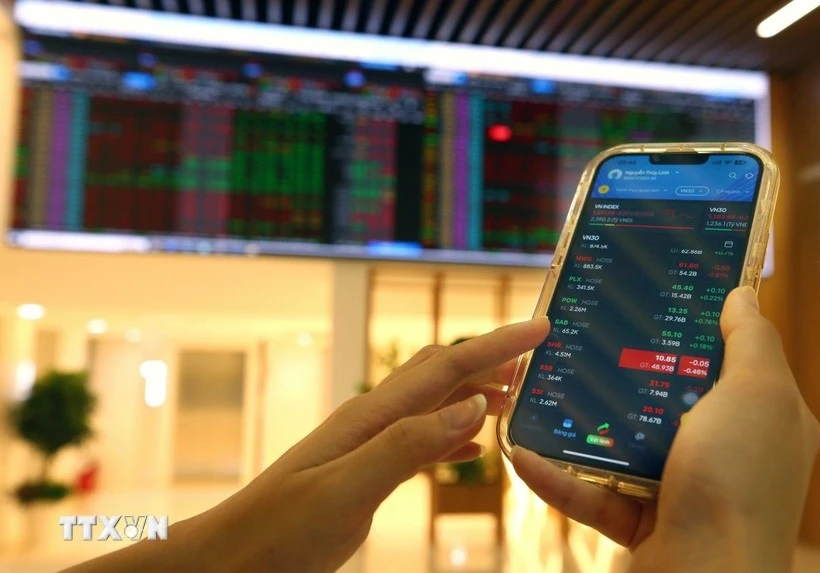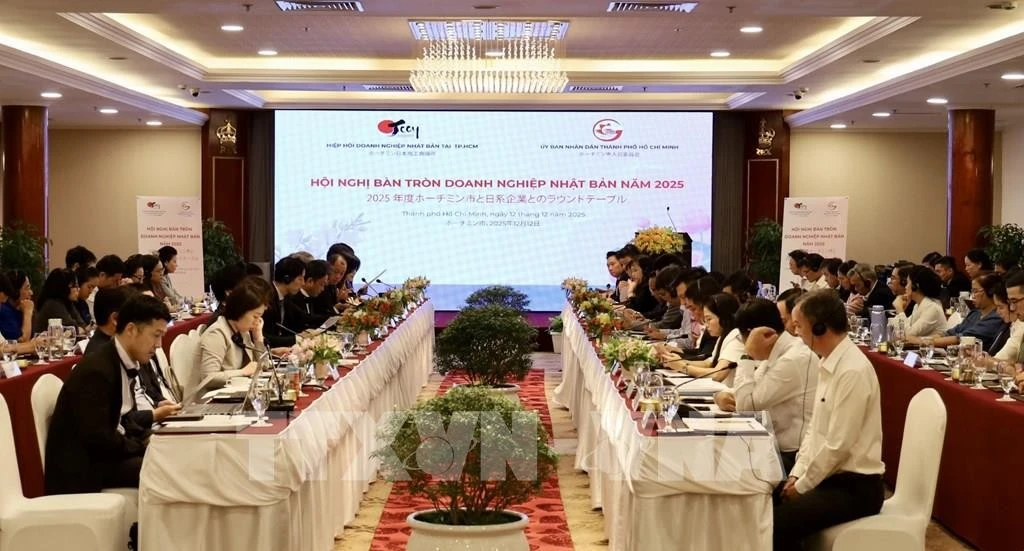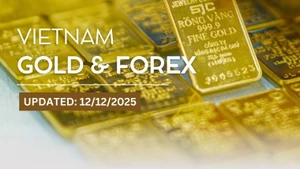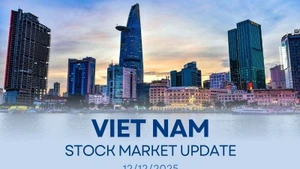Therefore, the State Bank of Vietnam's control of exchange rate stability this year is seen as continuing to face many difficulties and challenges.
International analysts say that the USD has recently increased in value because the US Federal Reserve (FED) is expected to cut interest rates by a total of 1% only twice in 2025, instead of 4 times as announced in September 2024. Notably, the DXY index (US Dollar Index) in the international market surpassed 108.6 points and is at its highest level in more than 2 years. Pressures from the world have been putting great pressure on the domestic exchange rate.
Flexible management
Right from the beginning of 2025, the State Bank of Vietnam has made important adjustments in the foreign exchange market. Credit institutions and foreign bank branches are allowed to cancel forward transactions in whole or in part before the maturity date. Contracts with a value of 100 million USD or more can be cancelled up to 3 times, and contracts with a value of less than 100 million USD can be cancelled up to 2 times.
The experts highly appreciate the adjustment move of the State Bank of Vietnam, especially in the context of many market fluctuations at the end of 2024.
The provision of foreign currency forward contracts (with cancellation) sends a strong message from the operator in keeping the exchange rate stable around 25,450 VND/USD, while eliminating market expectations that the State Bank of Vietnam will increase the intervention price.
Looking back at the whole year of 2024, the exchange rates of Vietnam and emerging and frontier countries are all under pressure, with some markets having decreased by 10-12% compared to the beginning of the year.
Looking back at the whole year of 2024, the exchange rates of Vietnam and emerging and frontier countries are all under pressure, with some markets having decreased by 10-12% compared to the beginning of the year. Vietnam is one of the markets with a very large economic openness in terms of import and export. From June to December 2024, the interbank exchange rate was always at the ceiling level. But for the whole year, Vietnam saw a decrease in exchange rate of about 5%, much less than other countries in the region — this is a success.
According to the Permanent Deputy Governor of the State Bank of Vietnam Dao Minh Tu, in 2024, the bank managed the exchange rate flexibly and appropriately, contributing to absorbing external shocks; at the same time, synchronously coordinated monetary policy tools. Thanks to that, the foreign exchange market remained stable, foreign exchange liquidity was smooth, the foreign exchange needs of the economy were fully met; the exchange rate fluctuated flexibly in both directions, increasing/decreasing in accordance with market conditions.
“By the end of 2024, the exchange rate will increase by about 5.03%, maintaining stability, harmony, and balancing foreign currencies in the economy, ensuring import and export, businesses, and investors have nothing to worry about, so they do not have to speculate or hoard foreign currencies,” said Tu.
Proactively responding to fluctuations
Economic experts believe that the US entering a new term, along with global trade tensions and potential risks, will likely cause the VND to be affected by the country's tax policy. The macroeconomic report published by Dragon Capital Securities (VDSC) estimates that in 2024, the State Bank of Vietnam will sell about 9.4 billion USD to stabilise the exchange rate.
In 2025, many "unknowns" about the tariff policy of the Trump administration may increase the value of the USD and put pressure on the exchange rate. Nguyen Thi Phuong Lan, Research Director of VDSC Analysis Centre, said: In 2025, with the foreign exchange reserve buffer continuing to erode and the ability to attract/retain foreign currency flows lacking sustainability, the VND/USD exchange rate will fluctuate within a range of +/-5% and end the year at 26,200 VND/USD.
“A review of factors affecting the strength of the USD shows that the USD may continue to be strong in 2025. Therefore, the State Bank of Vietnam's control of exchange rate stability in 2025 will face more difficulties than advantages. The biggest difficulty is that foreign direct investment (FDI) capital flows are only disbursed enough to offset profits transferred back to the country, and the pressure on USD demand remains high when US interest rates remain high while foreign exchange reserves have decreased sharply,” said Nguyen Thi Phuong Lan.
Sharing the same view, Vietcombank Securities Company (VCBS) believes that there will be certain pressures on the exchange rate trend this year, coming from the fact that the strength of the USD remains high and central banks of many countries will likely persist in lowering interest rates to stimulate economic growth. However, the level of reduction will depend on the context of each country. In addition, geopolitical conflicts will cause investors to seek safe-haven assets, including the USD.
But overall, there are still many positive factors for the Vietnamese foreign exchange market in 2025, namely FDI attraction and remittances.
But overall, there are still many positive factors for the Vietnamese foreign exchange market in 2025, namely FDI attraction and remittances. At the same time, the strong growth of imports and exports with a trade balance forecast to continue to have a large surplus in the context of major economic recovery is also a "plus" for this year's exchange rate.
In addition, under pressure from the international market, along with the fact that the VND/USD exchange rate at banks is still maintained at a high level, analysts predict that in order to reduce exchange rate pressure and control inflation, it is not impossible that the State Bank of Vietnam will have to increase the operating interest rate in 2025 to avoid putting pressure on foreign exchange reserves when it has to sell a large amount of USD in 2024.
According to economic expert Dr Nguyen Tri Hieu, if the exchange rate increases, inflationary pressure in Vietnam will also increase. In that situation, the State Bank of Vietnam needs to pivot its monetary policy, including raising interest rates, along with other policies to reduce pressure and control inflation. This pivot may be a necessary step to stabilize the macro economy in the context of global fluctuations.
A representative of the State Bank of Vietnam said that the Bank is always ready to sell foreign currency, but this depends on market developments, especially the VND/USD exchange rate on the interbank market. Commercial banks will register to buy USD from the State Bank of Vietnam and then resell it to customers according to demand.
"In 2025, the State Bank of Vietnam will continue to closely monitor the market situation to flexibly and appropriately manage exchange rates, synchronously coordinating with monetary policy tools, contributing to controlling inflation and stabilising the macro economy," Dao Minh Tu affirmed.
















